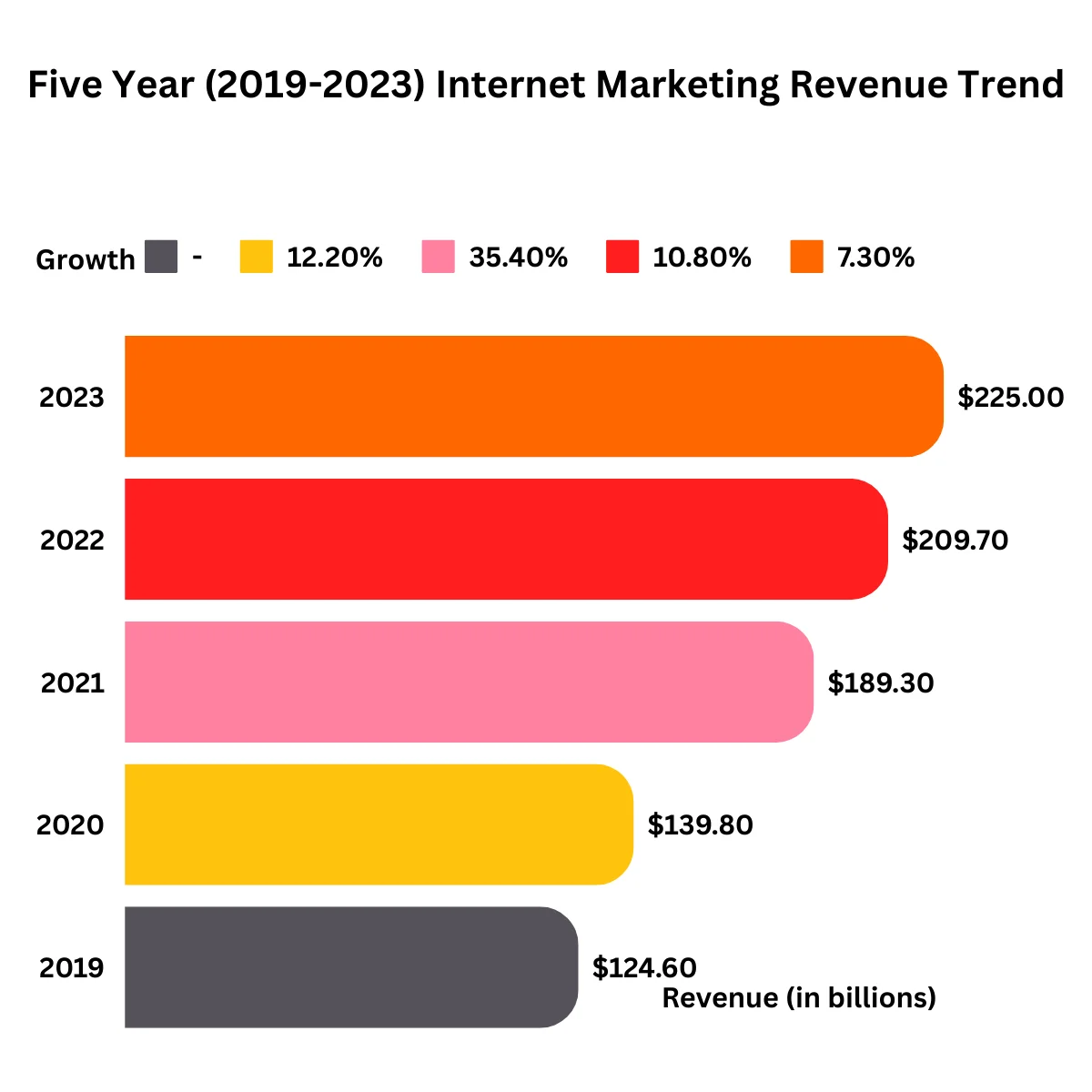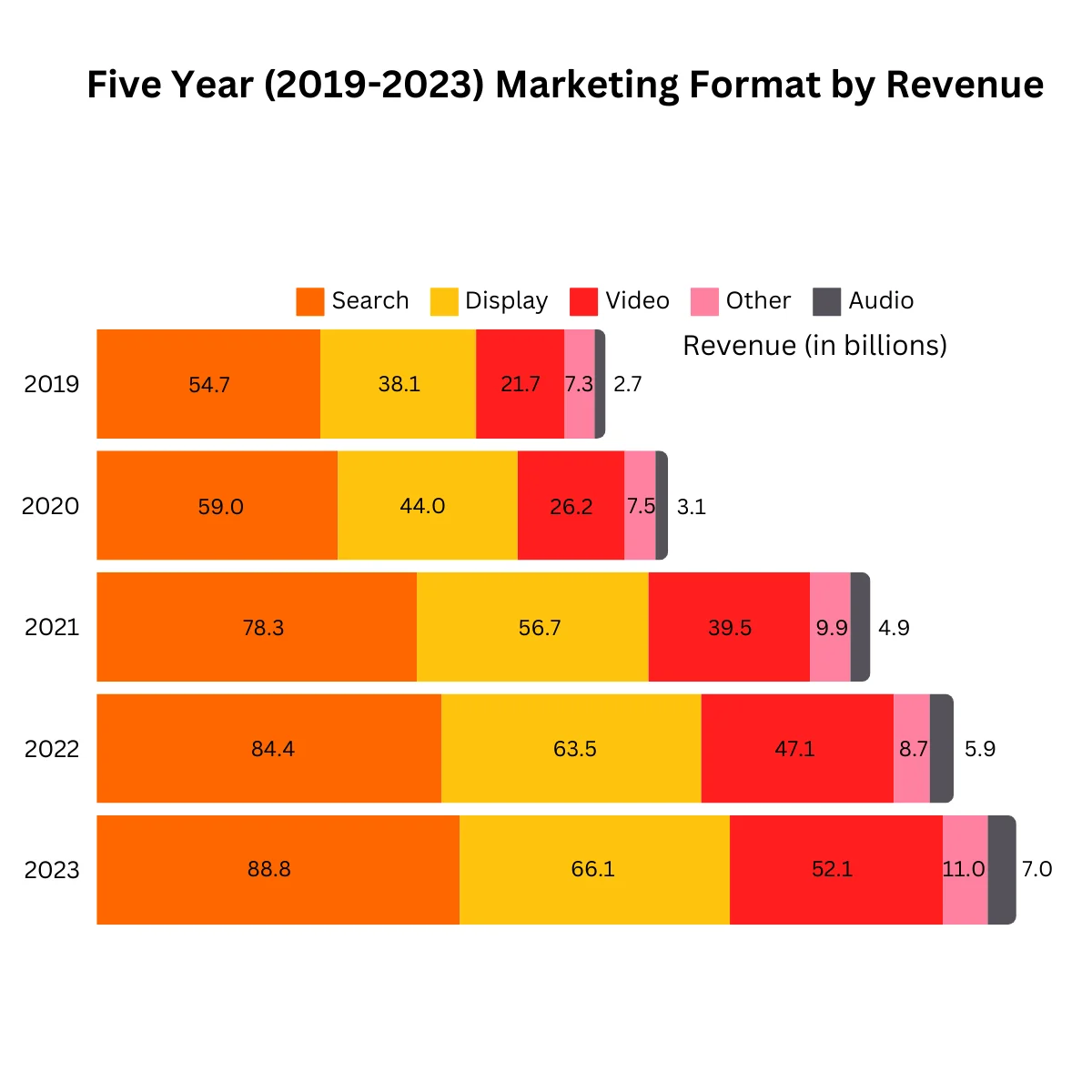
- About Us
- Design & Development
- Digital Marketing
- Analyze & Optimize
- Technologies
- Shopify Experts Agency
- Shopify Marketing Agency
- Shopify Support
- Shopify SEO Agency
- Shopify SEM Services
- Shopify SMM Services
- Shopify Web Design Agency
- Shopify Theme Development Services
- Shopify Theme Customization Services
- Shopify App Development Company
- Shopify Analytics
- Shopify CRO Agency
- Shopify Store Setup Services
- Shopify Product Description Services
- Shopify Email Marketing Services
- Shopify Content Writing Services
- Shopify Consulting Services
- Shopify Maintenance Services
- Shopify Speed Optimization Service Agency
- Shopify Migration Services
- Shopify Product & Collection Setup Services
- Shopify Marketing & Sales Consulting Services
- Shopify Content Marketing Services
- Shopify Logo & Visual Branding Services
- Shopify Brand Strategy Services
- Shopify Custom Domain Setup Services
- Shopify Business Strategy Consulting Services
- Shopify Sales Channels Setup Services
- Shopify Photo Editing Services
- Shopify Banner Ads Services
- Node JS Development Company
- PHP Development Services
- WordPress Development Services
- WooCommerce Development Services
- Magento Design & Development Services
- Joomla Development Services
- Drupal Development Services
- ReactJS Development Services
- Laravel Development Services
- HTML5 Development Services
- CodeIgniter Development Services
- AngularJS Development Services
- Shopify Experts Agency
- Blog
- Contact Us
Top Rated PPC Agency
Trusted PPC Services To Grow Your Biz
We have been long enough in the industry to know what works and what doesn’t. As the trusted PPC marketing company for all kinds of businesses, we handle everything related to ad campaigns. And we deliver exceptional results!
Years of
Tailored Expertise
Certified
Google Ads Experts
Generated in eCommerce Revenue
Leads Successfully Generated
Campaigns With Proven ROI
Please fill in your details below
to get free quote

PPC Agency to Grow Conversions
Not Enough ROI from Your Ads? We’ll Fix That!
Quit worrying about low-performing ads and call us instead! Allow our PPC management services to transform your ads into conversion hubs.
How do we do it? We start with getting the basics right—understanding your audience, identifying your USP, assessing competitors’ ads—and creating customized campaigns based on our data-driven insights.
Tell us what needs to be fixed—Google Ads, social platforms, or remarketing— and we’ve got the expertise to get it right.
What Our Clients Say?
Wondering Why Businesses Love Our PPC Management Services? Here’s Why!
“Partnering with Website Pandas for PPC has been the best decision for us. The team helped us save money on AdWords advertising while boosting the lead count. We could not even imagine creating and managing AdWords the way Website Pandas did. Now we know that we can successfully compete with our competitors.”

Mike Johnson
“The PPC team at Website Pandas should be the go-to choice for search engine marketing. They are responsive, accountable, and extremely knowledgeable. I loved how the experts here solely focus on client results and ROI. Their resources and PPC strategies have helped me drive maximum awareness and conversion.”

Shane Smith
“Working with Website Pandas has been an absolutely amazing experience. They’ve been our partners for over six years now, and there is nothing I would complain about. The team does everything to make your business unique and at the top of web searches. I would highly recommend the agency to anyone looking to improve their online presence.”

Matt McVicker
“Website Pandas seamlessly executed our digital marketing strategy with impressive skill. The team showed us how Google can be used in innovative ways. Our company has experienced consistent and exponential growth on channels that didn’t work for us before. Now, we consider Website Pandas more of an extension of our company than a partner.”

Sarah Walker
Comprehensive PPC Services
Get More Leads, Better Conversion Rate, and Improved ROI? Partner with Our Us Today!
PPC Strategy & Consulting
If you need to stand out from the competition, it has to start with your ads. Our PPC marketing agency is your one-stop for everything related to PPC ads. You’ll be amazed by how our campaigns increase leads and conversions for your business.
PPC Audit
Is your campaign not performing as expected? Over the years, our PPC company has handled all kinds of businesses. Trust our team to identify problems, discover untapped opportunities, and ensure every dollar brings in results.
It takes an experienced team to create ads that truly convert. Our PPC experts understand the nuances of keyword research to help your ads reach the right audiences. Get started today to increase click-through rates and conversions, while staying within budget.
Google Local Services Ads
We understand the pulse of local customers who are actively searching for your services. And we know how to make your business get noticed. Why don’t we get started with optimizing Google Local Services Ads to improve your traffic?
Let’s find your customers on Facebook and Instagram. Our impactful Meta Ads campaigns feature engaging content to target the right audience. Looking to increase brand awareness? Or do you need to create meaningful connections with customers? Leave it to us!
You must definitely try Bing Ads to expand your reach. Our campaigns tap into Bing’s unique audience to improve your leads. We pay extra attention to every detail, from keyword selection to performance analysis, to ensure exceptional results.
YouTube Ads
Video storytelling is the new norm to attract customers. Do you need skippable or non-skippable ads? Our team designs campaigns that align with your goals. We incorporate updated strategies to improve brand visibility, engagement, and conversions.
Remarketing Ads
We have ways to reach out and bring back customers who left without converting! Sign up for our PPC advertising services and we’ll create engaging remarketing ads to convince such customers to take action.
Landing Page Optimization
Let’s impress your customers with relevant and engaging landing pages. Sign up for our PPC services and we’ll design pages that align with your campaign goals. We optimize every element—from layout to copy— to maximize conversion rates.
Ad Creatives
Get noticed among the crowd with creative ads. Our PPC company develops visually compelling designs and persuasive copy that resonate with your target audience. We’ll make your ads capture attention and receive engagement.
With a meticulously designed CRO strategy, we’ll help turn clicks into conversions. Our process? We analyze user behavior, test strategies, and implement changes that improve performance. The continuous refinement ensures maximum ROI and growth for your campaigns.
Ongoing PPC Management
Yes, we know how overwhelming PPC management can be. That’s exactly why we would love to take that load off your back with our end-to-end PPC management services. Our monitoring, analysis, and optimization empower campaigns to perform well, remain adaptable, and consistently deliver results.
Comprehensive PPC Ad Improvement Strategies We Leverage
Custom PPC solutions to optimize campaigns, reduce ad spend, and achieve remarkable results for your business.
- Account Structure Overhaul and Optimization
- Performance Forecasting and Budget Allocation
- Smart Bid Optimizations
- Manual Bid Optimizations
- Quality Traffic Improvements
- Keyword Match Type Selections
- Custom Conversion Tracking
- Offline Conversion Tracking
- Micro Conversions Tracking
- Quality Score Improvements
- PPC Funnel Optimization
- PPC Call Tracking
- A/B or Split Testing
- Google Analytics 4 Improvements
- Keyword Refinement/Expansion
- Competitor Research
- Mobile Optimization
- New Beta Releases
- Single Keyword Ad Groups
- Keyword Tapering Ad Groups
- Expansion Opportunities
- Retargeting Campaign Tactics
- Affinity Audience Targeting
- In-Market Audience Targeting
- Custom Audience Targeting
- Dynamic Copy Testing
- Creative Ad Copywriting
- PPC Reporting Automation
- YouTube Campaign Refinement
- Ad Extension Granularity
- Geofence Targeting
- Bid Modifiers
- Cross-Channel Campaigns
- Image Ad Creation & Split Testing
- Click Fraud Protection
- Local PPC Campaigns
Our Proven 6-Step Framework for PPC Success
Our simple, powerful, and proven stages maximize ROI and ensure your campaigns lead to impressive conversions.
1/ Dicovery
We dig deep to understand your business, USP, target audience, and goals. This research helps us discover opportunities and create a PPC approach guaranteed to succeed.
2/ Strategy Development
Our PPC team creates a custom roadmap based on valuable insights. Every strategy we offer focuses on your unique needs and market trends to help increase clicks.
3/ Ad Creation
This is the stage where those eye-catching ads come to life. With years of experience, we design compelling visuals and copy that grab attention, engage your audience, and enhance conversions.
4/ Launch and Tracking
We know precise launching is crucial. We’ll efficiently launch your campaigns and track performance from day one. Rest assured that every detail will be monitored for insights and opportunities.
5/ Optimization
Launching is just the beginning. We keep working, regularly testing, and refining ads to keep your campaigns ahead of the competition. Try our PPC services to receive amazing results.
6/ Comprehensive Reporting
Of course, you need to know where your money goes. With clear, detailed reports that show performance metrics, and progress, we promise that every dollar will be accounted for.
PPC Trends 2025 and Beyond
What’s ahead for PPC in 2025? Outshine your competitors with these must-know PPC strategies and emerging trends.
Automation Will Lead the Way
By 2025, PPC will be all about automation. Advanced AI tools will transform campaign management. Automated bidding strategies are good news for businesses since it helps them optimize ad spend in real-time.
Campaigns like Google’s Performance Max will leverage machine learning further for ad placements across multiple platforms. This will make targeting more precise. Automation will also simplify time-consuming tasks such as audience segmentation and performance tracking.
As a result, marketers will be free to focus on strategy. Adopting these technologies early will give businesses a competitive edge and help them achieve better results with less manual effort.
Personalized Ads will Dominate
Personalization is the core of effective PPC. In 2025, campaigns will feature dynamic ad content customized to user preferences, behaviors, and even location.
Platforms like Meta and YouTube already offer powerful tools to customize ads. For example, a user searching for vegan cupcakes might see ads highlighting nearby stores or discounts based on their specific interests. This approach builds stronger connections with audiences and improves chances of conversion.
Voice and Video Ads are the Future
Voice search and video ads are the latest trends in PPC. As more people use voice-enabled devices, campaigns must target natural language queries. This means optimizing keywords for how people talk, not just type.
Simultaneously, video is growing in popularity as a powerful mode of storytelling. Platforms like YouTube and TikTok work great in capturing attention and driving action. Short, engaging video ads will become essential to reach audiences and improve conversions.
Expert PPC Tricks to Maximize ROI
Explore advanced strategies from our PPC management services. Super-charge your campaigns to achieve targeted goals.
Dayparting
We know how to achieve optimal ad performance by running campaigns at peak hours. Our experts analyze audience behavior to identify the best times to display ads. This way, your ads target active users, and encourage more clicks and higher engagement.
Negative Keywords
Let’s eliminate excess spending by blocking irrelevant searches. Our PPC specialists use negative keywords to refine targeting so that ads appear only to relevant users. This prevents unqualified clicks and increases conversion rates.
Dynamic Keyword Insertion
As a PPC management company, we are committed to designing personalized ads that your audience can relate to. Our dynamic keyword insertion is based on popular user searches. Aligning with search intent enhances engagement, click-through rates, and the chances of conversions.
Competitor Benchmarking
We’ll help you stay ahead with competitor analysis. Our PPC experts assess rival campaigns to identify their strengths and weaknesses. Then, we create customized plans to outperform them, gain market share, and maximize ROI.
The Tools Driving Your PPC Success
For Different Tasks, We leverage different PPC tools to bring your business better insights and impressive results.
Keyword Research
Tools like SEMrush, Ahrefs, and Google Keyword Planner help us identify high-performing keywords that attract traffic and conversions. Our PPC company focuses on intent-driven searches to reach the right audience.
Analytics & Reporting
Platforms like Looker Studio, Supermetrics, GA4, and GTM provide actionable insights. They help us track performance, refine campaigns, and ensure every dollar gets you results.
Competitor Analysis
Let’s steal your competitors' strategies! Ethically, of course. We use SpyFu and iSpionage to decode strategies used by your competitors. Armed with this data, we design campaigns that help you dominate the market.
Local Expertise: PPC Services Tailored for Your City
Reach your local audience with focused PPC campaigns customized to reflect the trends in your city.
Custom PPC Services for Every Industry
Specialized PPC solutions custom-made by PPC experts to align with the unique needs of your business.
Google & Meta Ads Benchmarks for Different Industries
Key PPC Data Insights Across Various Industries.
Google Ads Benchmarks by Industry
-
Click Through Rate
-
Cost Per Click
-
Conversion Rate
-
Cost Per Action
Average Click-through Rate for Search and Google Display Network
| Sector | Avg. CTR (Search) | Avg. CTR (GDN) |
|---|---|---|
| Advocacy | 4.41% | 0.59% |
| Auto | 4.00% | 0.60% |
| B2B | 2.41% | 0.46% |
| Consumer Services | 2.41% | 0.51% |
| Dating & Personals | 6.05% | 0.72% |
| E-Commerce | 2.69% | 0.51% |
| Education | 3.78% | 0.53% |
| Employment Services | 2.42% | 0.59% |
| Finance & Insurance | 2.91% | 0.52% |
| Health & Medical | 3.27% | 0.59% |
| Home Goods | 2.44% | 0.49% |
| Industrial Services | 2.61% | 0.50% |
| Legal | 2.93% | 0.59% |
| Real Estate | 3.71% | 1.08% |
| Technology | 2.09% | 0.39% |
| Travel & Hospitality | 4.68% | 0.47% |
Average Cost-Per-Click for Search and Google Display Network
| Industry Type | Avg. CPC (Search) | Avg. CPC (GDN) |
|---|---|---|
| Advocacy | $1.43 | $0.62 |
| Auto | $2.46 | $0.58 |
| B2B | $3.33 | $0.79 |
| Consumer Services | $6.40 | $0.81 |
| Dating & Personals | $2.78 | $1.49 |
| E-Commerce | $1.16 | $0.45 |
| Education | $2.40 | $0.47 |
| Employment Services | $2.04 | $0.78 |
| Finance & Insurance | $3.44 | $0.86 |
| Health & Medical | $2.62 | $0.63 |
| Home Goods | $2.94 | $0.60 |
| Industrial Services | $2.56 | $0.54 |
| Legal | $6.75 | $0.72 |
| Real Estate | $2.37 | $0.75 |
| Technology | $3.80 | $0.51 |
| Travel & Hospitality | $1.53 | $0.44 |
Average Conversion Rates for Search and Google Display Network
| Sector | Avg. CVR (Search) | Avg. CVR (GDN) |
|---|---|---|
| Advocacy | 1.96% | 1.00% |
| Auto | 6.03% | 1.19% |
| B2B | 3.04% | 0.80% |
| Consumer Services | 6.64% | 0.98% |
| Dating & Personals | 9.64% | 3.34% |
| E-Commerce | 2.81% | 0.59% |
| Education | 3.39% | 0.50% |
| Employment Services | 5.13% | 1.57% |
| Finance & Insurance | 5.10% | 1.19% |
| Health & Medical | 3.36% | 0.82% |
| Home Goods | 2.70% | 0.43% |
| Industrial Services | 3.37% | 0.94% |
| Legal | 6.98% | 1.84% |
| Real Estate | 2.47% | 0.80% |
| Technology | 2.92% | 0.86% |
| Travel & Hospitality | 3.55% | 0.51% |
Average CPA (Cost-Per-Action) for Search and Google Display Network
| Sector | Avg. CPA (in Search) | Avg. CPA (in GDN) |
|---|---|---|
| Advocacy | $96.55 | $70.69 |
| Auto | $33.52 | $23.68 |
| B2B | $116.13 | $130.36 |
| Consumer Services | $90.70 | $60.48 |
| Dating & Personals | $76.76 | $60.23 |
| E-Commerce | $45.27 | $65.80 |
| Education | $72.70 | $143.36 |
| Employment Services | $48.04 | $59.47 |
| Finance & Insurance | $81.93 | $56.76 |
| Health & Medical | $78.09 | $72.58 |
| Home Goods | $87.13 | $116.17 |
| Industrial Services | $79.28 | $51.58 |
| Legal | $86.02 | $39.52 |
| Real Estate | $116.61 | $74.79 |
| Technology | $133.52 | $103.60 |
| Travel & Hospitality | $44.73 | $99.13 |
Facebook Ads Benchmarks by Industry
| Sector | Avg. CPC | Avg. CPL | Avg. CTR | Avg. CVR |
|---|---|---|---|---|
| Attorneys & Legal Services | $8.50 | $104.58 | 1.61% | 7.57% |
| Automotive — Repair, Service & Parts | $3.82 | $81.45 | 1.08% | 4.86% |
| Beauty & Personal Care | $2.44 | $42.10 | 2.26% | 5.93% |
| Business Services | $1.52 | $16.95 | 2.70% | 8.34% |
| Dentists & Dental Services | $4.10 | $32.46 | 1.54% | 9.83% |
| Education & Instruction | $2.03 | $31.82 | 2.32% | 8.49% |
| Finance & Insurance | $4.57 | $38.09 | 1.84% | 5.98% |
| Furniture | $2.10 | $39.25 | 2.36% | 6.11% |
| Health & Fitness | $3.29 | $57.40 | 1.46% | 5.78% |
| Home & Home Improvement | $2.18 | $24.29 | 1.78% | 8.87% |
| Industrial & Commercial | $2.77 | $24.53 | 1.48% | 12.03% |
| Personal Services (Weddings, Cleaners, etc.) | $1.93 | $20.49 | 2.56% | 9.19% |
| Physicians & Surgeons | $2.83 | $57.97 | 2.43% | 4.81% |
| Real Estate | $1.36 | $13.87 | 3.71% | 9.70% |
| Sports & Recreation | $1.20 | $14.59 | 3.74% | 8.87% |
Credit: Wordstream
Don’t Believe These PPC Myths
Debunk common PPC misconceptions and embrace real facts and strategies for better conversions and campaign performance.
PPC Marketing Revenue: Key Insights
Explore latest report on PPC marketing revenue, offering valuable insights into trending strategies, growth opportunities, and more.
Trust our experts at Website Pandas to transform these insights into data-driven PPC strategies that are guaranteed to maximize your ROI.






Real Results from Real Clients
Here are genuine stories from businesses just like yours that have succeeded with our designed PPC campaigns.
Calculate Your PPC ROI
With millions of dollars in ad spend across different industry verticals over the years, we know what works. Schedule your free consultation today to uncover ROI for your business.
What Makes Us Different?
Top Ranked PPC Marketing Agency
We know exactly how to tailor PPC campaigns to target your audience effectively and drive conversions to boost your bottom line.

1/ Comprehensive PPC Audit
Save money and time with Website Pandas. If your PPC campaigns need a boost, we’ll do a comprehensive audit and tell you precisely what to test next. And we’ll do it with fully customized marketing techniques.
2/ Customer Focused Agency
Website Pandas is customer-centric, and we’re proud to proclaim it. As a hybrid-first PPC agency, we fuse data insights with technology and human expertise to drive premium PPC campaigns that boost brand visibility and ROI.
3/ Certified Google Partner
Website Pandas ensures that your PPC campaigns make the most of every dollar spent while maximizing your return on investment. As a certified Google Partner, we know exactly how Google works to drive tangible results.
4/ Detailed Reporting
Our PPC reports reveal the numbers behind the ads. We give you transparent insights by evaluating success metrics like CPC, CTR, CPA, impressions, and more, which shows how your ad campaign is performing.
5/ Transparent Pricing
As a full-service PPC agency, We ensures you know exactly where your ad spends are going. Our transparent pricing highlights our all services and deliverables with no hidden charges. You get what you spend.
Stay Ahead with Our PPC Insights
We bring you emerging trends and proven tips to create smarter campaigns guaranteed to get conversions soaring.

How to Setup Google Tag Through Tag Manager?

Can You Remove Conversion Action in Google Ads Editor? Quick Guide 2025

Google Ad Grants: A Complete Guide 2025
FAQs
Find Answers To Commonly Asked Questions
What is PPC (Pay Per Click)?
PPC is the online advertising technique in which advertisers have to pay a specific amount when someone clicks their ad. If you are looking for ways to quickly drive traffic to your website through Google, Bing, or social media. PPC is the way to go. It works by targeting specific keywords or audiences.
Why hire a PPC agency?
The most important advantage of hiring a PPC agency is that they empower your campaigns with expert strategies. The best agencies have experts to handle specific tasks from keyword research to ad optimization. These professionals monitor performance, adjust bids, and create engaging ads customized to your goals. With a PPC company, you get better results with minimal stress.
How much does a PPC agency cost?
The cost of PPC services will depend on various factors such as the competitiveness of your industry, cost per click (CPC), your monthly advertising budget, etc. Typically, agencies charge a percentage of your ad spend or a flat monthly fee. The costs can be anywhere from $500 to $10,000 per month or more, depending on your ad budget and agency pricing model.
What is the difference between SEO and PPC?
SEO refers to optimizing a website to organically improve its ranking on search engines. It does not involve paying for placement. But PPC is different. It involves paying for ads to appear at the top of search results. It provides immediate traffic, while SEO builds sustainable growth.
How do I budget for my PPC campaign?
Start with understanding your goals and industry benchmarks. Identify your ideal cost-per-click. Now, set a monthly budget based on these factors. Do not forget to include ad spend, agency fees, and additional costs like landing page creation. Regularly review performance and optimize your spending accordingly.
What makes a successful PPC campaign?
A successful PPC campaign begins with targeting the right audience. Then comes creating compelling ads and consistently optimizing these ads. You also need clear goals, well-researched keywords, and engaging landing pages. More importantly, success also involves monitoring performance metrics, refining strategies based on data, and delivering a high ROI.
Newsletter
Subscribe For Updates And Insights













